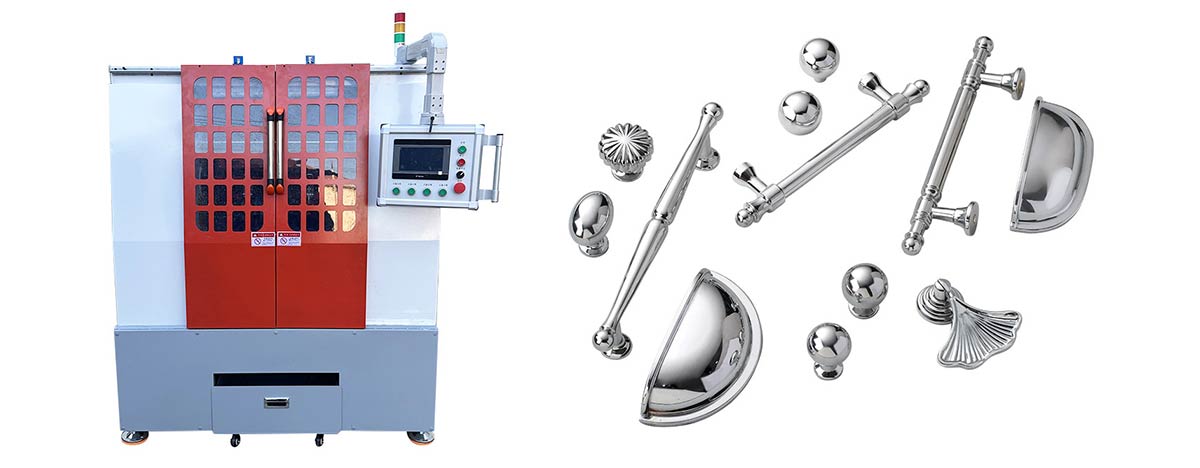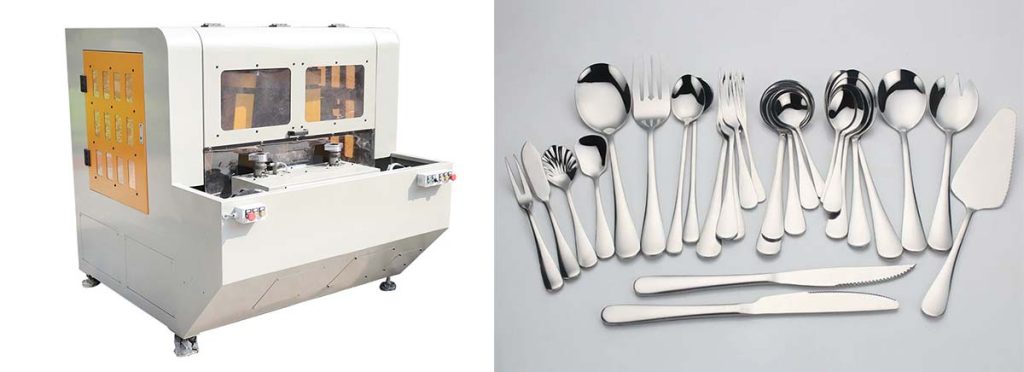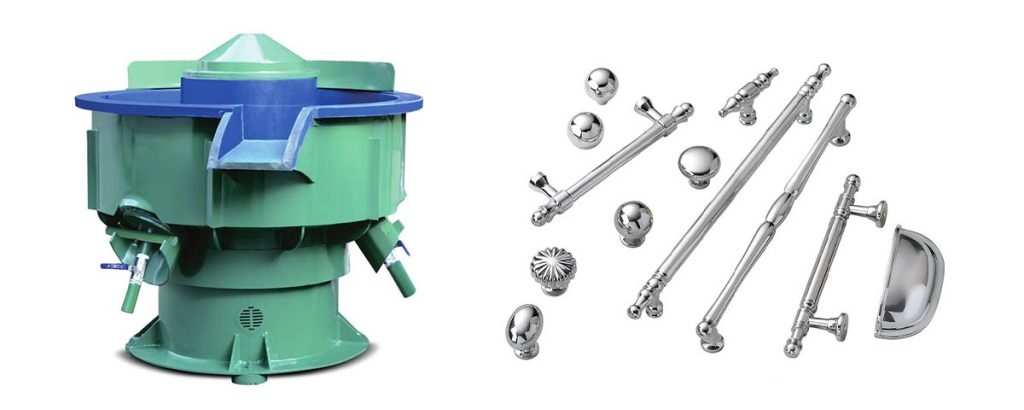

Scratches on workpieces during the operation of industrial buffing and polishing machines can compromise both aesthetics and functionality. When this occurs, operators should immediately halt the machine to prevent further damage. The next step is to inspect the surface carefully to identify the root cause. Contaminated buffing wheels, improper abrasive materials, or incorrect settings often lead to such issues. Resolving these problems promptly ensures the workpiece retains its quality. Always inspect your work frequently during the process to catch potential flaws early. Understanding the differences in buffing vs polishing techniques can also help minimize errors when using industrial buffing and polishing machines.
Key Takeaways
- Turn off the machine right away if scratches happen.
- Clean and check buffing wheels often to keep them clean.
- Pick the right abrasive for each material to work better.
- Change machine speed and pressure to match the material.
- Teach workers good techniques to avoid making scratches.
Preventing Scratches During Buffing and Polishing
Clean and Inspect Buffing Wheels and Pads Regularly
Buffing wheels and pads accumulate debris and residue during operation, which can lead to scratches on the workpiece. Regular cleaning prevents contamination and ensures smooth surface finishing. Operators should inspect the surface of the buffing wheels frequently to identify wear or embedded particles. Using compressed air or specialized cleaning solutions helps remove buildup effectively. Replacing worn-out wheels and pads is essential to maintain consistent results.
Tip: Always inspect your work frequently during the buffing process to catch potential flaws early and avoid costly rework.
Use the Correct Abrasive Material for Each Workpiece
Selecting the right abrasive material is crucial for achieving optimal results. Abrasive grits interact differently with various workpiece types, such as metal or aluminum. For instance, polishing aluminum requires softer abrasives to prevent damage, while harder materials like steel benefit from engineered grits with high-strength bonding systems. These advancements enhance grinding efficiency and improve surface finishing. Operators should use the right technique tailored to the material to achieve the desired shine.
Adjust Machine Settings for Optimal Performance
Incorrect machine settings often cause scratches during buffing and polishing. Operators should calibrate speed, pressure, and angle based on the workpiece material and desired finish. Lower speeds work well for delicate surfaces, while higher speeds are suitable for tougher materials like metal. Adjusting pressure ensures the abrasive material interacts evenly with the surface, reducing the risk of scratches. Regularly testing and fine-tuning settings improves the overall buffing technique and ensures consistent results.
Implement Quality Control Measures
Implementing quality control measures ensures consistent results during buffing and polishing processes. These measures help identify potential issues early, reducing the likelihood of scratches on workpieces. Operators can adopt several proven strategies to maintain high standards.
| Quality Control Measure | Description |
|---|---|
| Statistical Process Control (SPC) | Uses statistical techniques to monitor and control the machining process, ensuring consistency and quality. It helps identify trends and variations that may indicate potential issues. |
| In-process Inspection | Allows for real-time adjustments to ensure parts meet design specifications, crucial for maintaining high quality and reducing defects. |
| Environmental Control | Managing temperature and humidity to prevent size variations, which can lead to defects in workpieces. |
| Preventive Measures | Enhances workpiece rigidity and optimizes cutting conditions to prevent vibrations and defects. |
Statistical Process Control (SPC) is a valuable tool for monitoring buffing operations. It uses data to detect trends and variations, enabling operators to address problems before they escalate. In-process inspections provide real-time feedback, allowing adjustments to be made immediately. This ensures that workpieces meet design specifications and minimizes defects.
Environmental factors, such as temperature and humidity, can affect the outcome of buffing and polishing. Controlling these variables prevents size variations that may lead to scratches. Preventive measures, such as enhancing workpiece rigidity, also play a critical role in maintaining surface quality.
Tip: Regularly review quality control data to identify recurring issues and implement corrective actions promptly.
Train Operators on Proper Buffing Techniques
Proper training equips operators with the skills needed to achieve flawless results. Many scratches occur due to improper handling or lack of knowledge about buffing techniques. Training programs should focus on the fundamentals of buffing and polishing, including selecting the right abrasive materials and adjusting machine settings.
Operators must learn to use the right technique for each material. For example, softer abrasives work best for delicate surfaces, while harder materials require more robust options. Training should also emphasize the importance of maintaining consistent pressure and angle during the process. These factors significantly impact the quality of the finish.
Hands-on practice is essential for mastering buffing techniques. Supervisors can provide feedback during training sessions to help operators refine their skills. Additionally, ongoing education ensures that operators stay updated on the latest advancements in buffing and polishing technology.
Note: Well-trained operators not only reduce the risk of scratches but also improve overall efficiency and productivity.
Fixing Scratches on Workpieces
Assess the Severity of the Scratches
Before addressing scratches, operators must evaluate their severity. This step determines the appropriate repair method. Scratches can range from superficial marks to deep grooves that compromise the workpiece’s integrity. Operators can use visual inspection or advanced tools to assess the damage.
Several criteria help measure scratch severity:
- Binary classification identifies whether a scratch exists or not.
- Video recording, including infrared cameras, tracks scratch patterns.
- Wearable devices monitor scratch occurrences but may not measure intensity.
- Scratch intensity often correlates with itch intensity, assessed using scales like the Peak Pruritus NRS.
Accurate assessment ensures the correct repair process is applied, minimizing unnecessary material removal and preserving the workpiece’s quality.
Rebuff or Repolish with Finer Abrasives

Rebuffing or repolishing is an effective solution for removing scratches. Operators should start with coarse abrasives to eliminate visible imperfections. Gradually transitioning to finer abrasives enhances the surface finish and restores the workpiece’s shine.
Here is a step-by-step guide:
- Begin with coarse abrasives, such as 60-80 grit, to address deep scratches.
- Progress to finer grits like 120, 180, and 220 to smooth the surface.
- Use ultra-fine abrasives, such as 320, 400, or above 1,000 grit, for a polished finish.
Each finer abrasive reduces imperfections left by the previous one. This technique is particularly effective for polishing aluminum and other metals, ensuring a flawless surface.
Apply Specialty Polishing Compounds
Specialty polishing compounds are designed to remove fine scratches and achieve a high-gloss finish. These compounds work well with rotary and orbital polishers, making them versatile for various applications.
Key benefits of using specialty compounds include:
- Removal of P1500 grit and finer sand scratches.
- Elimination of 3000-grade sanding marks without swirl marks.
- Compatibility with high heat and humidity, reducing cleanup effort.
- Options for different abrasiveness levels to address varying scratch depths.
- Water-based formulas that are body shop safe and free of waxes or silicones.
Polishing compounds refine surfaces with supreme optical clarity, restoring a like-new shine. Operators should select a polishing compound based on the workpiece material and scratch severity. For example, polishing aluminum benefits from compounds designed for softer metals, ensuring optimal results.
Tip: Always test the compound on a small area before applying it to the entire surface to ensure compatibility and desired results.
Seek Professional Refinishing for Severe Scratches
Severe scratches on workpieces often require professional refinishing services to restore their original quality. When scratches penetrate deeply into the surface, standard buffing and polishing techniques may not suffice. Professional refinishing offers a reliable solution, especially for high-value materials like metal or polished aluminum.
Refinishing specialists use advanced tools and techniques to address deep scratches. These experts assess the damage and determine the best approach for repair. They often employ specialized equipment, such as industrial-grade buffers, to achieve a flawless finish. This process not only removes imperfections but also enhances the overall shine of the workpiece.
Professional refinishing can also be a cost-effective alternative to replacing damaged items. For instance, several case studies highlight the success of refinishing projects:
| Project Title | Date | Location | Savings Over Replacement | Key Achievements |
|---|---|---|---|---|
| Glass Scratch Removal – Toronto, Canada | Aug 2020 | Toronto, ON, Canada | $7,000,000 | Consulted, trained local crew |
| Las Vegas Scratched Glass Repair | May 2019 | Las Vegas, NV | $25,000 | Saved 25 commercial panels |
| Scratched Curtainwall – Notre Dame | Jun-Aug 2019 | South Bend, IN | $1,000,000 | Saved 8,500 sq. ft., 42 tons of glass |
These examples demonstrate the significant savings and quality improvements achieved through professional refinishing. In the Notre Dame project, refinishing preserved 42 tons of glass, avoiding costly replacements. Similarly, the Toronto project saved millions by training local crews to handle severe scratches effectively.
For industries dealing with metal buffing or polishing aluminum, professional refinishing ensures consistent results. It eliminates the risk of further damage caused by improper handling. This approach is particularly beneficial for restoring the shine of delicate surfaces, such as polished aluminum, where precision is critical.
Tip: Always consult a professional refinishing service for severe scratches to maximize cost savings and maintain the integrity of the workpiece.
Maintenance Tips for Industrial Buffing and Polishing Machines
Schedule Regular Maintenance for Machines
Regular maintenance is essential for keeping industrial buffing and polishing machines in optimal condition. A comprehensive preventive maintenance routine ensures peak performance and extends the lifespan of equipment. Operators should focus on regular inspections, cleaning, and lubrication to prevent issues that could damage workpieces.
- Preventive maintenance reduces the risk of severe tool failures, which can lead to scratches or other imperfections on the surface of workpieces.
- Timely detection of tool wear helps maintain the best working conditions, ensuring consistent surface finishing.
- Predictive maintenance strategies, such as monitoring vibrations and tool performance, minimize unexpected breakdowns.
A systematic maintenance routine offers several benefits, including extending equipment lifespan, reducing costs, and enhancing safety. For example:
| Benefit | Description |
|---|---|
| Extending Equipment Lifespan | Catches small issues early, preventing major problems and reducing wear and tear. |
| Reducing Costs | Fewer emergency repairs and less frequent equipment replacements save money. |
| Enhancing Safety and Compliance | Regular monitoring reduces the risk of accidents and ensures compliance with safety standards. |
Replace Worn or Damaged Buffing Tools
Worn or damaged buffing tools can compromise the quality of surface finishing. Operators should monitor tools for signs of wear, such as uneven surfaces or reduced performance. Replacing these tools promptly ensures consistent results and prevents damage to workpieces.
Statistical evaluations of polishing tools reveal that monitoring vibrations and frequency amplitudes can help determine the optimal replacement time. This approach allows operators to assess tool conditions in real time, ensuring timely replacements without requiring extensive training.
Using well-maintained tools enhances the efficiency of buffing processes. For instance, replacing a worn buffing wheel improves its ability to remove imperfections and achieve a smooth surface. Regularly updating tools also reduces the risk of contamination, which can lead to scratches or uneven finishes.
Keep the Work Area Clean to Avoid Contamination
A clean work area plays a crucial role in achieving high-quality surface finishing. Contaminants like metal shavings or debris can interfere with the buffing process, causing scratches or streaks on the workpiece. Maintaining cleanliness ensures consistent outcomes and prevents unnecessary rework.
- Clean buffing wheels operate efficiently, removing imperfections without leaving residues.
- Regular cleaning prevents the buildup of contaminants, ensuring uniform finishes.
- Removing debris from the work area reduces the risk of contamination during polishing.
Operators should establish a routine for cleaning buffing wheels, tools, and work surfaces. Using compressed air or specialized cleaning solutions helps eliminate debris effectively. A clean environment not only improves the quality of surface finishing but also extends the lifespan of buffing tools and machines.
Document and Review Processes for Continuous Improvement

Documenting and reviewing processes play a vital role in achieving continuous improvement in industrial buffing operations. This practice ensures that workflows remain efficient, effective, and adaptable to changing needs. By maintaining detailed records and conducting regular reviews, organizations can identify areas for enhancement and implement necessary changes.
A structured approach to documentation and review offers several measurable benefits:
- Elimination of redundancies and outdated procedures, leading to improved clarity and efficiency.
- Early detection of potential problems through ongoing monitoring and analysis.
- Increase in customer and staff satisfaction by 54% due to continual improvement.
- Consistent monitoring and evaluation of product quality.
- Streamlining processes, which contributes to cost savings and sustainability.
- Fostering a culture of innovation within the organization.
For buffing processes, documenting standard operating procedures (SOPs) ensures that operators follow consistent methods. These SOPs should include details about machine settings, abrasive materials, and maintenance schedules. Regular reviews of these documents help identify inefficiencies or outdated practices. For example, if a specific buffing technique consistently results in scratches, the review process can highlight this issue and prompt corrective action.
Organizations should also encourage feedback from operators. Their hands-on experience provides valuable insights into the practical challenges of buffing tasks. Incorporating this feedback into process reviews fosters a collaborative environment and drives innovation. Additionally, tracking performance metrics, such as defect rates or production times, helps measure the effectiveness of implemented changes.
Tip: Use digital tools to streamline documentation and review processes. Software solutions can automate data collection, making it easier to analyze trends and implement improvements.
By prioritizing documentation and regular reviews, businesses can enhance the quality of their buffing operations, reduce costs, and maintain a competitive edge.
Conclusion
Industrial buffing and polishing machines play a vital role in achieving flawless surface finishing, but scratches can compromise the quality of metal workpieces. Identifying the causes of scratches, such as improper technique or contaminated tools, ensures effective solutions. Preventive measures, including regular maintenance and operator training, reduce the risk of damage and improve results.
Proactive strategies minimize future issues and financial losses. These include:
- Real-time monitoring to gather data for informed decisions.
- Alert systems to detect and resolve problems quickly.
- Machine learning to predict events and save costs.
- Business intelligence integration to quantify financial impacts.
Operators should follow metal buffing tips to refine their technique and maintain consistent shine. Regularly reviewing processes and adopting advanced technologies ensures high-quality outcomes for polishing aluminum and other metals.
